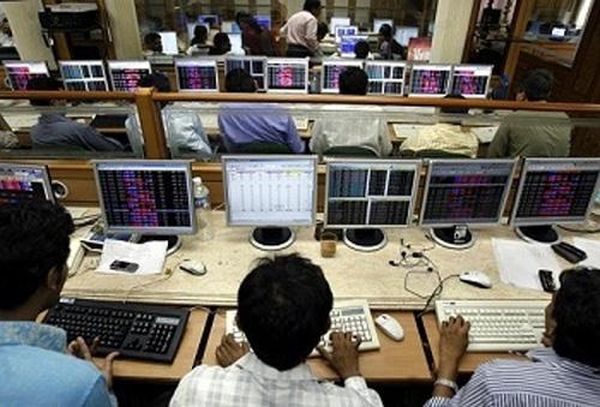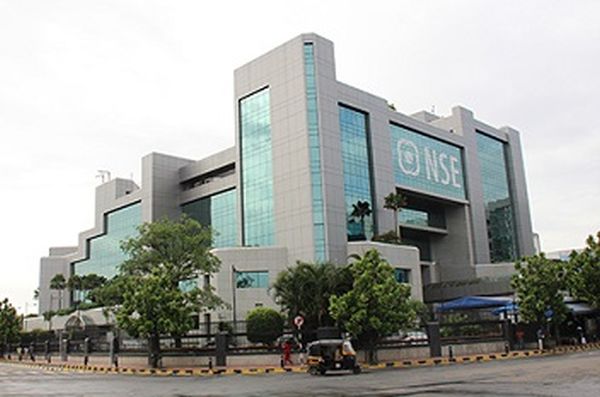
by admin | May 25, 2021 | Business, Commodities, Commodities News, Large Enterprise, Markets, News
 New Delhi/Mumbai/Kolkata/Chennai/Bengaluru : Come Dhanteras, and the hunger for gold, so visible among Indians, has helped them tide over the impact of demonetisation and the Goods and Services Tax (GST), as customers thronged jewellery stores on Tuesday.
New Delhi/Mumbai/Kolkata/Chennai/Bengaluru : Come Dhanteras, and the hunger for gold, so visible among Indians, has helped them tide over the impact of demonetisation and the Goods and Services Tax (GST), as customers thronged jewellery stores on Tuesday.
“We have witnessed very good footfall. Demand for jewellery is definitely higher this year than investment demand,” Balram Garg, Managing Director, P.C. Jewellers, told IANS in Delhi, adding “We expect sales to go up by 30 per cent on pent up demand due to various regulatory issues”.
Price of 24 carat gold in the national capital was hovering around Rs 30,000 per 10 grams on Tuesday.
‘Dhan’ in Hindi means wealth, and ‘Terah’ means number 13. Dhanteras, accordingly, means, the 13th Day of the Krishna Paksha in the month of Ashwin in Indian Lunar Calendar, which in Hindu tradition is devoted to wealth.
Many seek to buy gold, silver and utensils and invoke the gods to bring in prosperity. In several parts of the country, people also worship the Goddess of Wealth — Lakshmi.
Echoing similar upbeat sentiments as Delhi, Jayantilal Challani, President of Madras Jewellers and Diamond Merchants Association and a partner in Challani Jewellery Mart, told IANS: “The demand for gold and silver is good. First Dhanteras post-GST regime and also demonetisation and income disclosure scheme issues has settled down. The footfalls in the stores are good.”
“During the last six-to-eight months, sales were a bit dull. But for the past few days, the demand is good. The prices have also come down. Today the price of gold is around Rs.2,837 per gram in Chennai,” Challani added.
The Centre’s recent decision to not make mandatory furnishing of PAN or Aadhaar card details for buying jewellery in cash up to Rs 200,000 had also ushered in a positive sentiment among buyers. The earlier limit was Rs 50,000 as part of the anti-money laundering (AML) guidelines.
“Gold price remains stable and range-bound in the run-up-to the festivals at around Rs 3,000 per gram, which is a positive factor. Footfalls in retail stores have been good since morning. However, compared to last year, sales growth would be tepid,” Pankaj Parekh, Chairman of India Bullion and Jewellers Association, Regional (East), told IANS in Kolkata.
Gold is at the centre of festivities and gifting traditions in India, particularly during Dhanteras, Diwali and the wedding season that follows.
“Currently, gold demand seems to be recovering after withdrawal of the AML guidelines. Policy reforms in quick succession in recent years have targeted transparency and the industry is transitioning under GST to a more organised structure, with long term benefits,” said Somasundaram P.R., Managing Director, India, at World Gold Council.
“It appears that demand for gold jewellery and branded coins seems to be better than the past quarter, particularly in relation to organised players. A good monsoon and stable gold prices are definitely encouraging consumers to make token purchases for the auspicious festivals. The ensuing wedding season, however, holds the key for the quarterly demand performance,” he added.
In Mumbai, All India Gems & Jewellery Federation Chairman Nitin Khandelwal said that with AML issues having been amicably resolved, buyers’ sentiments have been boosted.
“Though the footballs are increasing, we do not expect any growth over last year’s sales. We shall be happy even if last year’s sales/quantity figures are achieved, coming after demonetisation, GST and RERA (Real Estate Regulatory Authority),” Khandelwal told IANS.
However, the demand for gold jewellery for the Diwali festival in Bengaluru remained subdued because of negative sentiment and regulatory issues. Continuous rains for several days may also have done their bit to dampen enthusiasm for buying gold.
“Though GST is not an issue as the rate is only 3 per cent on gold and jewellery, customers are wary of buying, as PAN card is mandatory if the bill is more than Rs 2 lakh,” Bengaluru Jewellers’ Association President Y.S. Ravikumar told IANS.
“Owing to less purchasing power among the upper and middle classes, demand for gold or jewellery has not picked up since demonetisation on November 8 last year,” he added.
Also with continuous rains in the city over the last fortnight, footfalls in retail gold shops or showrooms across the place have been 40 per cent less than they were last year.
—IANS

by admin | May 25, 2021 | Economy, Markets, News
 Mumbai : Even as the general investors’ sentiments were subdued on Tuesday, the key Indian equity index — the NSE Nifty50 — made marginal gains to close at a new high.
Mumbai : Even as the general investors’ sentiments were subdued on Tuesday, the key Indian equity index — the NSE Nifty50 — made marginal gains to close at a new high.
According to market observers, low volumes and profit booking subdued investors’ sentiments — however, expectations of healthy quarterly results aided the key indices in paring some of their losses.
On a closing basis, the wider Nifty50 of the National Stock Exchange (NSE) inched up by 3.60 points or 0.04 per cent to close at a new high of 10,234.45 points.
However, the 30-scrip Sensitive Index (Sensex) of the BSE, closed on a negative note, ending at 32,609.16 points, lower by 24.48 points or 0.08 per cent from Monday’s close at 32,633.64 points.
In terms of the broader markets, the S&P BSE mid-cap index rose by 0.40 per cent, and the small-cap index gained 0.53 per cent.
On Monday, better-than-expected macroeconomic data pushed the key Indian equity indices to close at record highs. The NSE Nifty50 had gained 63.40 points, or 0.62 per cent to end at 10,230.85 points, while the Sensex of the BSE closed higher by 200.95 points or 0.62 per cent to 32,432.69 points.
“Markets ended flat on Tuesday as they traded in a narrow range. Trading sentiment seemed to be subdued ahead of a long Diwali weekend,” Deepak Jasani, Head – Retail Research, HDFC Securities, told IANS.
“Major Asian markets have ended on a mixed note. European indices like FTSE 100 and DAX traded higher.”
Anand James, Chief Market Strategist, Geojit Financial Services, said: “Earnings positivity helped to maintain gains, but headaches over Korea as well as valuation fears characteristic to bull market rallies, ensured that sharp gains were limited to few stocks, especially as investors profit booking was seen in the index heavy weights eyeing the long weekend.”
On the currency front, the rupee weakened by 30 paise to close at 65.02 against the US dollar from its previous close at 64.72.
According to Dhruv Desai, Director and Chief Operating Officer of Tradebulls, the benchmark indices snapped a three-session long gaining spree as it tracked mixed trends in global markets.
“Most of the sectoral indices traded in the positive territory, except for consumer durables, bankex and IT index,” Desai told IANS.
Sector-wise, the S&P BSE oil and gas index surged by 116.18 points, followed by capital goods index by 75.21 points and healthcare index by 53.78 points.
On the other hand, the S&P BSE banking index fell by 66.74 points, consumer durables index by 36.88 points and IT index by 25.49 points.
Major Sensex gainers on Tuesday were: Cipla, up 4.09 per cent at Rs 631.25; Bharti Airtel, up 2.86 per cent at Rs 465.95; Asian Paints, up 2.06 per cent at Rs 1,194.40; Bajaj Auto, up 1.09 per cent at Rs 3,257; and Hero MotoCorp, up 0.85 per cent at Rs 3,806.
Major Sensex losers were: Axis Bank, down 1.44 per cent at Rs 513.20; Tata Motors, down 1.04 per cent at Rs 432; Infosys, down 0.84 per cent at Rs 931.45; Dr. Reddy’s Lab, down 0.62 per cent at Rs 2,382.35; and State Bank of India, down 0.44 per cent at Rs 251.15.
—IANS

by admin | May 25, 2021 | Employment, Opinions
 By Amit Kapoor,
By Amit Kapoor,
The lack of jobs is beginning to haunt the Modi government. The Reserve Bank of India’s recent Consumer Confidence Survey shows that public perception is also beginning to take account of the fact that there are no jobs available in the economy. According to the survey, 43.7 percent of responders felt that the employment situation had worsened as compared to 31.9 percent a year ago.
The official unemployment numbers, which hover at around five per cent, will never reflect the true picture since in a developing economy, where poverty is high and unemployment benefits are virtually non-existent, no one can afford to remain out of the workforce for long. They usually find employment doing odd jobs or in the agricultural sector.
However, job creation numbers do give a clearer picture. According to the Labour Bureau, the Indian economy was generating around 900,000 jobs in 2010 and 2011. Since then, the jobs created in the economy have consistently fallen, reaching around 135,000 in 2015 as opposed to the need for an annual generation of over 11,00,000 jobs. The situation has not improved since.
However, this is not a recent phenomenon. The Indian economy has never been good at creating jobs. As per popular estimates, including those of the RBI, India’s employment elasticity, which is a measure of the percentage in employment for a one percent change in economic growth, has been around 0.2 in the post-reform period. This implies that as the real GDP rises by 10 percent, employment will merely rise by two percent. To put things in perspective, International Labour Organisation (ILO ) estimates Brazil’s employment elasticity to be an impressive 0.9.
This long-term trend shows that there is a structural reason behind this problem. When an economy transitions from agricultural-led to a modern one, it undergoes three key transformations: Movement of labour out of agriculture into industry and then services, shift of workers from informal into the formal sector and finally a rapid pace of urbanisation as more industries are set up in the rural areas around cities.
India has missed the bus on all three of these fronts. Industrial development never took place in India and the economy became service-led right away. Employment in industry and services remains predominantly informal. Consequently, the pace of urbanisation has slowed in India.
Moreover, whatever industrial development has taken place in India has been either capital-intensive or skilled labour-intensive. India’s labour-capital ratio in a vast majority of industries has been lower than other countries at similar levels of development. The very opposite is needed for job creation in a developing economy. But why has the pace of development been so skewed for India? What is so different about India that made it deviate from the historical trend of structural transformation for economies around the world?
India’s notoriously rigid labour laws are the leading cause behind these anomalies. Labour falls under the concurrent list of the constitution, which implies that both the Centre and the states can form laws on it and neither has been miserly about this. When combined, each state ends up with over 200 different labour laws. These disincentivise firms from growing beyond a point. For instance, the Trade Unions Act of 1926 requires firms with seven or more workers to form trade unions. The Factories Act of 1948 mandates manufacturing units with 10 or more workers to have several working hour limits and work place conditionalities that become stricter with more workers.
The most burdensome of all is the Industrial Disputes Act (IDA) of 1947, which covers all industrial disputes and makes it almost impossible for firms with 100 or more workers to fire anyone. Establishments require permission from the labour department to lay anyone off and such permissions are rarely given even if the firm is unprofitable. Therefore, firms with six or less employees have the most labour flexibility.
As expansion of firms comes with high legislative costs in India, it is rational for them to remain small. This is why 84 per cent of manufacturing employment is restricted to micro and small enterprises in stark contrast with other developing countries (46 per cent for South Korea and Thailand, 27 per cent for Malaysia and 25 per cent for China).
India’s labour laws have inhibited the growth of manufacturing firms, which lose out on the gains they could have made from economies of scale and innovation. Due to these reasons India has not been able to undergo industrial development and is finding it difficult to gain from the rise in labour costs in China. India could have been the next manufacturing hub after China but since there is a sheer lack of capability; countries like Bangladesh and Vietnam have been thriving in labour-intensive sectors like textiles.
Labour reforms are, therefore, the antidote to India’s perpetual job crisis — but this is politically sensitive topic. The Modi government is in a unique position of being capable enough of pushing through such bold reforms since it has the numbers needed for this. However, considering how most of its attempts at reform have backfired, this will be the farthest thing on the government’s mind. A piecemeal attempt at labour reform with the Small Factories Bill, which aims to exempt factories with 40 workers from 14 labour laws, has been in limbo for the last two years.
However, on a positive note, some state governments are beginning to allow larger firms to retrench workers without seeking permission with their own amendments to IDA. Hopefully, it will not be too late before India manages to extricate itself from this mess of its own creation.
(Amit Kapoor is chair, Institute for Competitiveness, India. The views expressed are personal. He can be contacted at amit.kapoor@competitiveness.in. Chirag Yadav, senior researcher, Institute for Competitiveness, India has contributed to the article.)
—IANS

by admin | May 25, 2021 | Economy, Markets, News
 By Porisma P. Gogoi,
By Porisma P. Gogoi,
Mumbai : Supported by good buying sentiments ahead of Diwali, key Indian equity indices rode the bulls for the second consecutive week, with the wider Nifty50 of the National Stock Exchange (NSE) hitting record highs on the last trading day of the week.
Market observers said the risk-taking appetite of investors got a major fillip by domestic data indicating stable inflation and healthy factory output, coupled with positive global cues, upbeat quarterly earnings data of an IT major and strong domestic flow of funds.
The Nifty50, on Friday (October 13), closed trade at a new high of 10,167.45 points, surpassing its previous closing high of 10,153.10 points scaled on September 18. On a weekly basis, it edged higher by 187.75 points, or 1.88 per cent.
The index also hit a fresh intra-day high of 10,191.90 points on Friday, crossing its previous high of 10,178.95 points on an intra-day basis scaled on September 19.
The 30-scrip Sensitive Index (Sensex) of the BSE, too, witnessed a strong closing at 32,432.69 points — up 618.47 points, or 1.94 per cent, on a weekly basis — its highest level since August 1 when it closed at a high of 32,575.17 points.
“So far this year, Sensex has gained 22 per cent, while Nifty is up 24 per cent,” Dhruv Desai, Director and Chief Operating Officer of Tradebulls, told IANS.
D.K. Aggarwal, Chairman and Managing Director, SMC Investments and Advisors, said: “In the week gone by, the domestic stock market, which has been on a northward move for the last two weeks, is expected to be further buoyed by signs of easing of geo-political tensions and huge inflow in mutual funds.”
According to data provided by market analysts, domestic mutual funds have received inflows of $16 billion from April to September 2017.
“Also, good demand on consumer stocks on arrival of festival season and interest in pharma stocks amid positive regulatory approvals supported the bulls,” Aggarwal told IANS.
“Industrial production expanded to a nine-month high of 4.3 per cent in August while retail inflation was stagnant at 3.28 per cent in September compared to the previous month. The domestic currency, which was under pressure, has now got some strength as against the US dollar to hit near three-week high,” he added.
During the week, the Indian rupee appreciated by 45 paise to close at 64.93 to a US dollar from its previous week’s close at 65.38.
Head – Equity of Kotak Life Insurance Hemant Kanawala told IANS that the two major factors that influenced the markets during the week were strong domestic flow of funds and continued pressure on earnings.
“FIIs have sold $1.6 billion in the month of September taking their net selling to $3.3 billion in the last two months,” Kanawala pointed out.
Provisional figures from the stock exchanges showed that FIIs off-loaded stocks worth Rs 3,454.51 crore during the week. However, domestic institutional investors continued to pump-in funds and bought scrip worth Rs 3,154.04 crore.
Figures from the National Securities Depository (NSDL) revealed that foreign portfolio investors (FPIs) divested equities worth Rs 1,224.36 crore, or $187.76 million, during October 9-13.
“Global economies (US, Europe and China) are showing signs of improvement which was helping domestic sectors like metals and mining and chemicals due to increase in commodity prices,” said Vinod Nair, Head of Research, Geojit Financial Services.
“Further, better results from IT major Tata Consultancy Services (TCS) and a strong earnings expectation from oil and gas major helped market momentum. Mid and small-cap attracted investor attention led by ease in GST rates and stock specific actions,” Nair added.
The top weekly Sensex gainers were: Bharti Airtel (up 12.86 per cent at Rs 431.45); Reliance Industries (up 4.76 per cent at Rs 876.70); TCS (up 4.74 per cent at Rs 2,561); Axis Bank (up 4.54 per cent at Rs 527.35); and Adani Ports (up 4.47 per cent at Rs 406.30).
The losers were: ONGC (down 2.07 per cent at Rs 170.10); State Bank of India (down 1.64 per cent at Rs 252.45); Dr. Reddy’s Lab (down 1 per cent at Rs 2,354); Maruti Suzuki (down 0.53 per cent at Rs 7,868.25); and Tata Motors (DVR) (down 0.52 per cent at Rs 237.95).
(Porisma P. Gogoi can be contacted at porisma.g@ians.in)
—IANS

by admin | May 25, 2021 | Corporate, Opinions
 By Taponeel Mukherjee,
By Taponeel Mukherjee,
Current debates around job creation and growth numbers in India suggest a slight slowdown of the economy. Besides the fiscal stimulus and concessions, what the economy really needs for long-term growth is a more liquid and deep corporate bond market.
The fundamental issue that currently plagues the economy is the heavily-leveraged corporate balance sheets that have created such high interest servicing costs that corporates have little money left to invest in new business, which in turn has slowed job creation.
An efficient corporate bond market would help companies to raise capital in the primary market and help investors to trade in and out of risks in the secondary market. The old- school way of bank lending by a select few banks funding corporate balance sheets in India must be slowly phased out in favour of a more structured market. A fully functioning corporate bond market would have the following advantages:
* Lower credit costs across the spectrum: Currently, given the relative illiquidity in the corporate bond market in India investors charge an “illiquidity premium” from the issuer due to the difficulty in exiting investments. A liquid secondary corporate bond market will lead to a gradual decline in borrowing rates as investors demand less of the “illiquidity premium”. Interest servicing costs will go down, allowing
money to be reinvested in new projects that create jobs.
* Better demarcation of credit quality: A liquid and transparent secondary corporate bond market will make more information available to investors to judge individual credit risk, thus leading to better demarcation between good-quality and poor-quality balance sheets. Investors can continue to lend to deserving businesses while businesses are incentivised to keep the quality of the balance sheet high. The current situation of direct bank lending creates a distortion in incentives for corporations. This also leads to deserving businesses not getting access to credit due to the market clubbing good credit with bad given that it has little in the way of measuring credit quality. Increased transparency with a liquid and deep corporate bond market brings down the cost of credit in the economy and helps efficient projects get funded.
* Wider investor base: A well-developed corporate bond market allows a wider investor base to access the market, with each investor holding a smaller proportion of the total risk. The diversity of investors implies diverse balance sheets with varied asset-liability structures, thereby providing corporations access to the right mix of capital in terms of both structure and duration. Currently, banks with extremely short-dated liabilities are unable to fund long-dated assets, creating inefficiencies and slowing economic growth.
The implementation of the bankruptcy law and the crackdown on shell companies by the government are right steps towards creating an efficient capital market and corporate bond market. A transparent corporate structure will create an efficient capital market for sure, but a lot more needs to be done. Rules on accounting results need to be made even more stringent. The market needs to have faith beyond doubt in corporate results. Concurrently, India needs to deepen the government bond market, which will serve as the benchmark for the corporate bond market.
Additionally, both global and domestic institutional investors must be incentivised to participate in corporate bonds through regulations that make it easier and attractive to invest in corporate bonds. We also need to make the issuing of corporate bonds more attractive by lowering the regulatory costs
involved, hence encouraging medium-sized corporates to issue bonds. A deeply liquid and functioning corporate bond market will be an essential pillar to propel the Indian economy forward in the coming decades.
(Taponeel Mukherjee heads Development Tracks, a business advisory firm. The views expressed are personal. He can be contacted at taponeel.mukherjee@development-tracks.com)
—IANS

 New Delhi/Mumbai/Kolkata/Chennai/Bengaluru : Come Dhanteras, and the hunger for gold, so visible among Indians, has helped them tide over the impact of demonetisation and the Goods and Services Tax (GST), as customers thronged jewellery stores on Tuesday.
New Delhi/Mumbai/Kolkata/Chennai/Bengaluru : Come Dhanteras, and the hunger for gold, so visible among Indians, has helped them tide over the impact of demonetisation and the Goods and Services Tax (GST), as customers thronged jewellery stores on Tuesday.



